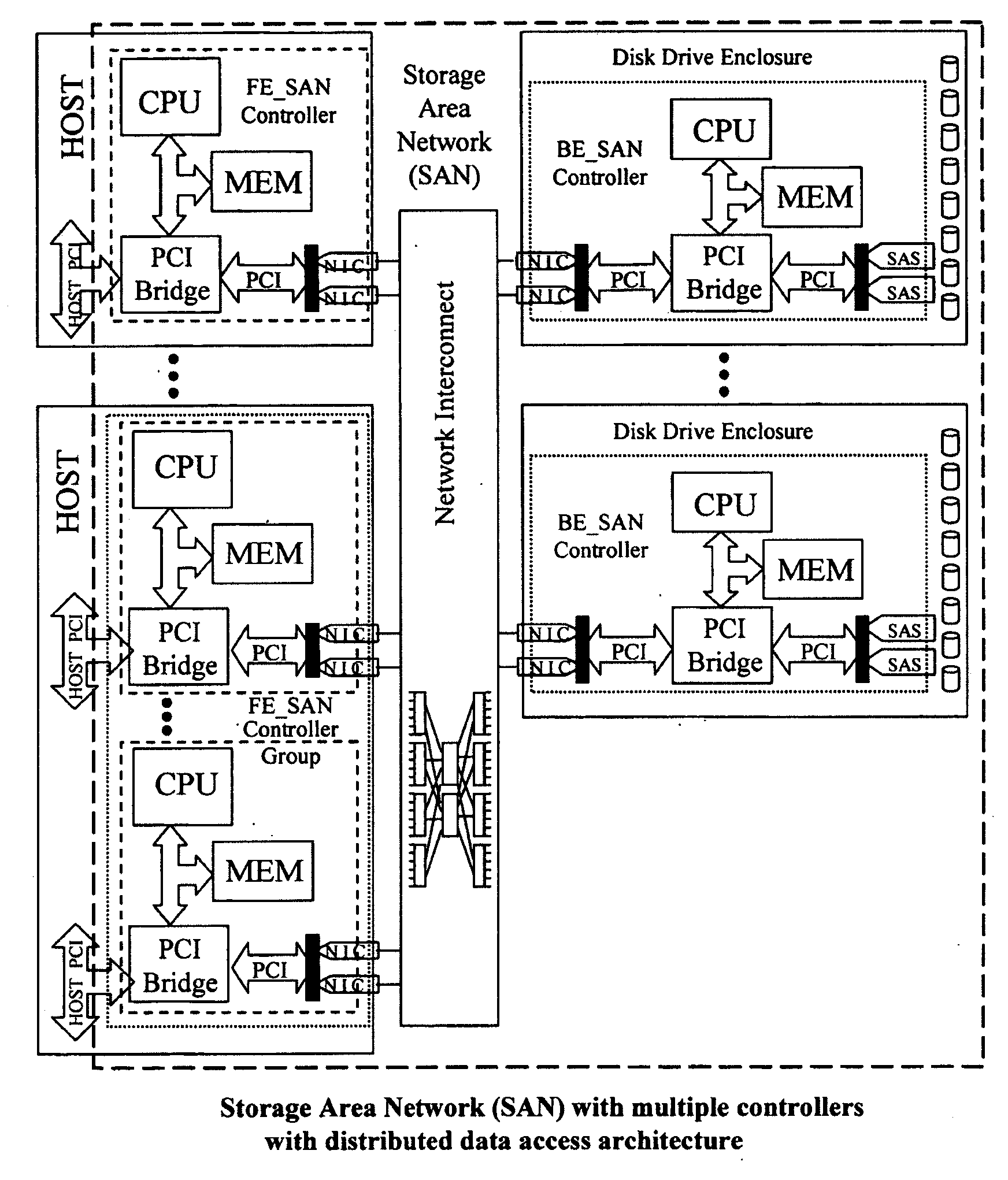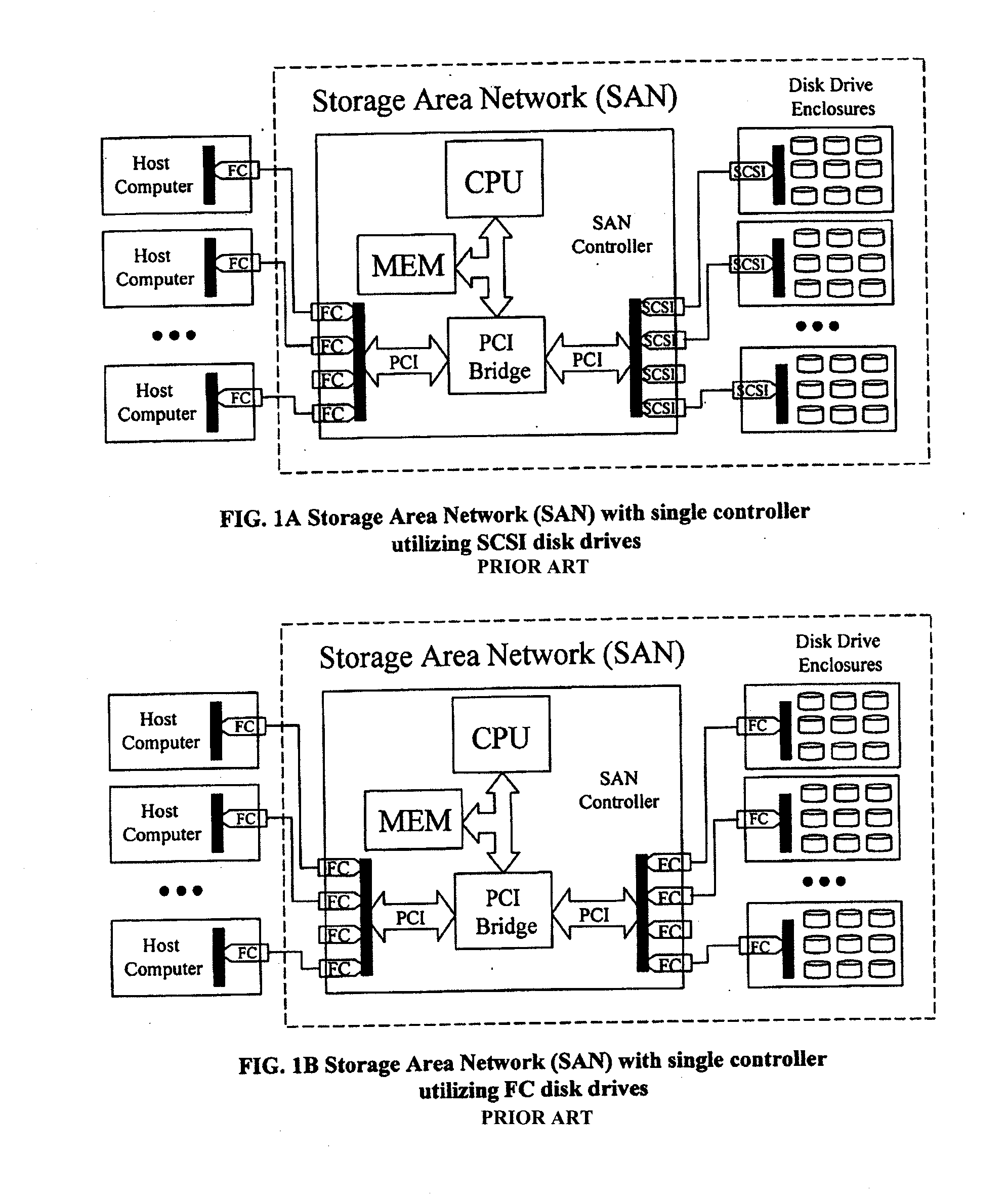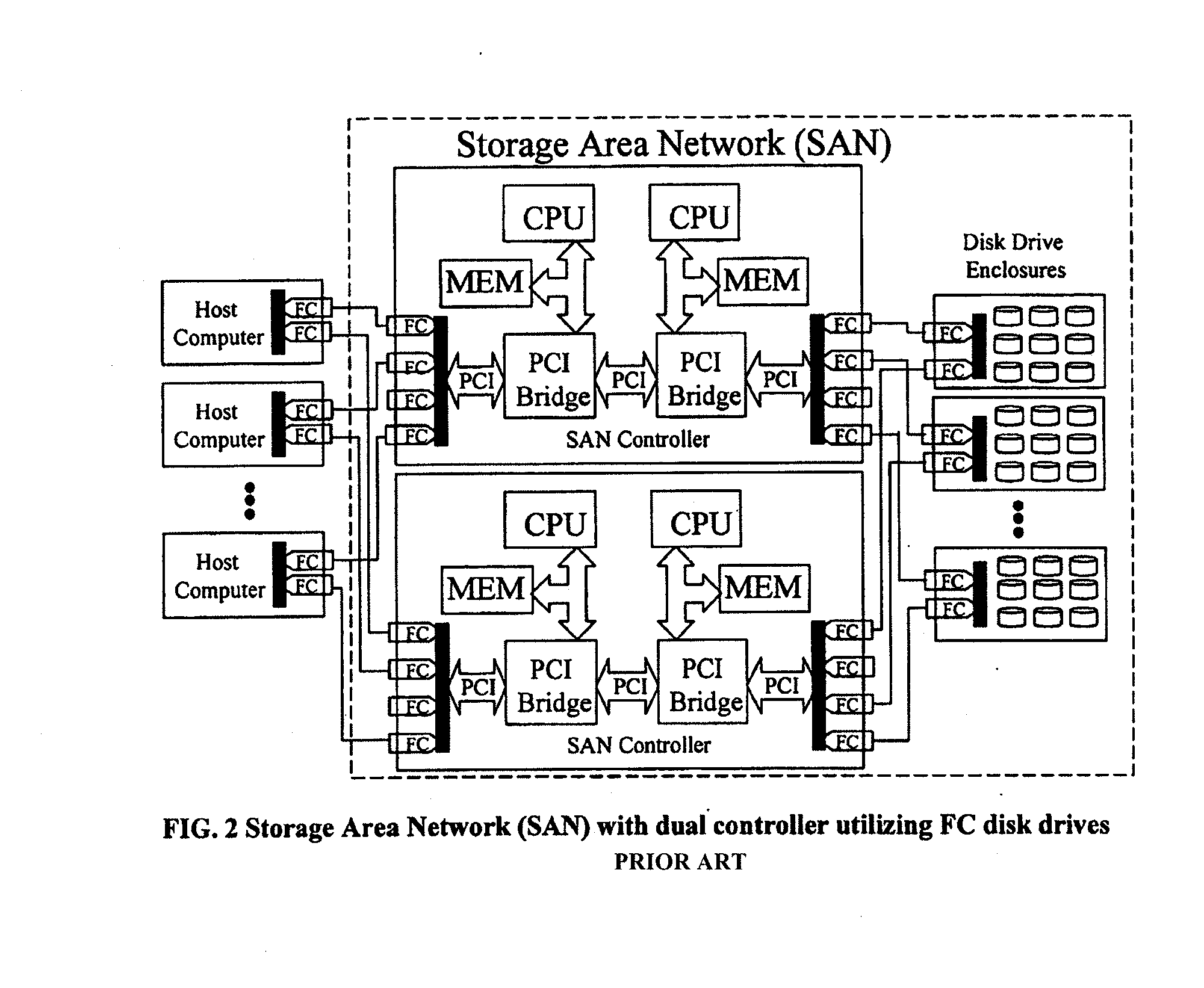Scalable Data Storage Architecture And Methods Of Eliminating I/O Traffic Bottlenecks
a data storage and data architecture technology, applied in the field of storage raid controllers and storage area network (san) systems, to achieve the effects of improving system performance, data transfer speed, and increasing storage capacity
- Summary
- Abstract
- Description
- Claims
- Application Information
AI Technical Summary
Benefits of technology
Problems solved by technology
Method used
Image
Examples
Embodiment Construction
[0027]A description of one or more embodiments of the invention follows.
[0028]FIGS. 1A and 1B, illustrate legacy approach to Storage Area Network design and implementation. Such SAN controller supports multiple virtual volumes (LUNs) creating an illusion that there are many independent disks. Both Front-End and Back-End code run on the same SAN controller providing as much bandwidth as such implementation (hardware, firmware, or embedded software) allows. In addition, unusually, there is only one instance of code and data structures that handles particular virtual disk. Therefore, all I / O traffic associated with that particular virtual disk is handled by that code instance which could become a bottleneck in heavy I / O traffic conditions. Some solutions utilize shared memory architecture to improve I / O bandwidth. However, again, one single instance of the data structures has to be accessed creating opportunity for a bottleneck to occur. As motioned in the preceding paragraphs, this so...
PUM
 Login to View More
Login to View More Abstract
Description
Claims
Application Information
 Login to View More
Login to View More - R&D
- Intellectual Property
- Life Sciences
- Materials
- Tech Scout
- Unparalleled Data Quality
- Higher Quality Content
- 60% Fewer Hallucinations
Browse by: Latest US Patents, China's latest patents, Technical Efficacy Thesaurus, Application Domain, Technology Topic, Popular Technical Reports.
© 2025 PatSnap. All rights reserved.Legal|Privacy policy|Modern Slavery Act Transparency Statement|Sitemap|About US| Contact US: help@patsnap.com



